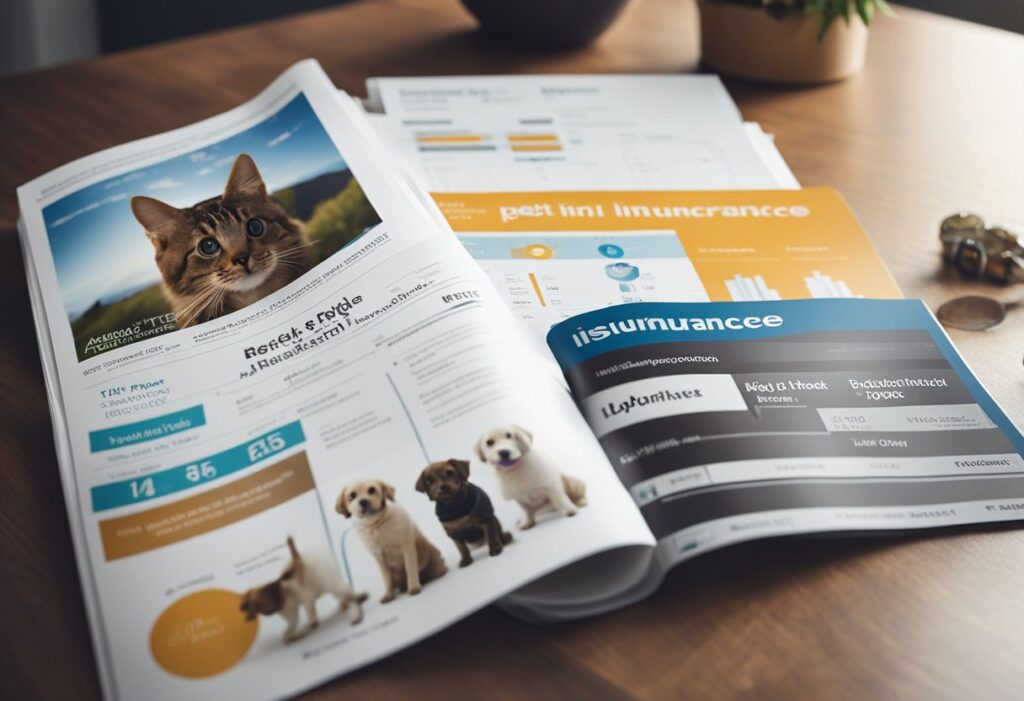Pet Insurance: Cost, Coverage, and Benefits for Cats and Dogs
Pet insurance provides financial coverage for veterinary expenses incurred in caring for pets. Similar to health insurance for humans, pet insurance helps offset the costs of unexpected medical bills resulting from accidents, illnesses, and routine care. By paying a monthly or annual premium, pet owners can access various levels of coverage, which may include various veterinary expenses associated with their health and well-being. Pet insurance offers reassurance to owners, ensuring that they can provide the best possible care for their furry companions without facing financial strain.

While coverage can vary by insurance provider and the specific policy, here are common inclusions in pet insurance:
- Accidents: Protection against unforeseen injuries caused by accidents, including fractures, cuts, or swallowing foreign objects.
- Illnesses: Coverage for various health issues such as infections, digestive disorders, respiratory ailments, allergies, and other medical conditions.
- Diagnostic Tests: Coverage for medical examinations such as blood work, urine analysis, X-rays, MRIs, and additional imaging techniques used to identify health problems.
- Prescription Medications: Coverage for prescribed medications to treat illnesses and manage chronic conditions.
- Surgeries: Coverage for surgical procedures, including both emergency surgeries and elective procedures.
- Hospitalization: Coverage for hospital stays and related expenses, including overnight observation and intensive care.
- Specialist Care: Coverage for consultations and treatments provided by veterinary specialists, such as oncologists, dermatologists, cardiologists, and neurologists.
- Chronic Conditions: Coverage for ongoing treatments and management of chronic conditions like diabetes, arthritis, or allergies.
- Hereditary and Congenital Conditions: Coverage for medical conditions that your pet may be predisposed to due to genetics or breed-specific traits.
- Alternative Therapies: Some policies may include coverage for alternative therapies like acupuncture, chiropractic care, or physical therapy.
- End-of-Life Care: Coverage for euthanasia services, cremation, or burial expenses in some cases.
Pet insurance can vary widely based on several factors, including the age and breed, your location, the level of coverage you choose, and the insurance provider you select. On average, pet insurance premiums typically range from $20 to $50 per month for dogs and $10 to $30 per month for cats. However, premiums can be higher for some breeds that are prone to specific health issues or for older pets. Additionally, the level of coverage you opt for—whether it’s basic accident coverage, comprehensive coverage including illness and wellness care, or specialized coverage for chronic conditions—will also affect the cost. It’s essential to carefully review policy details and compare quotes from different insurance companies to find a plan that fits your budget and provides the coverage you need for your pet’s health care needs.
Pet insurance can be especially beneficial for pet owners who have older pets or pets with pre-existing conditions, as these pets may be more likely to require medical care. Additionally, pet insurance can provide financial assistance for emergency situations, such as accidents or unexpected illnesses. Overall, pet insurance can be a valuable investment for pet owners who want to ensure that their furry friends receive the best possible care without breaking the bank.
Understanding Pet Insurance

Importance of Insuring Your Pet
Insurance for pets is crucial for pet owners as it helps manage the high costs of veterinary care, ensuring pets receive timely and necessary treatment without causing financial strain. It provides protection against unexpected accidents, illnesses, and emergencies, allowing owners to focus on their pet’s health and well-being rather than worrying about expenses. Ultimately, having pet insurance offers reassurance and support in giving pets the best possible care throughout their lives.
For pet owners wanting to guarantee high-quality medical care for their animals without financial stress, investing in insurance for pets is essential. Pet insurance can also help pet owners save money in the long run by covering routine check-up costs and preventative care.
Pet Insurance Types


Pet insurance comes in various types, offering coverage tailored to different needs and budgets.
Accident-only coverage is the most basic form, providing financial assistance for unexpected injuries resulting from accidents, such as broken bones or ingestion of foreign objects.
Comprehensive coverage includes both accidents and illnesses, encompassing a wide range of medical conditions, from infections to chronic diseases like diabetes or cancer.
Some policies offer additional options, such as wellness coverage for routine care like vaccinations and dental cleanings, or coverage for hereditary and congenital conditions. Additionally, there are specialized plans for specific animals, such as exotic pet insurance for birds, reptiles, or small mammals.
When choosing a pet insurance policy, it is important to consider the level of coverage, the policy cost, and any exclusions or limitations. It is also important to read the policy carefully and ask questions to ensure that the policy meets the pet owner’s needs.
Overall, insuring your pet is a valuable investment for pet owners who want to ensure their pets receive the best medical care possible. With the right policy, pet owners can rest assured knowing that their pets are covered for unexpected illnesses, accidents, and injuries.
Pet Insurance Cost
Pet insurance costs in the USA varies significantly based on factors such as your pet’s species, breed, age, and existing health conditions. Premiums also depend on the coverage level chosen. On average, dog pet insurance typically ranges from $30 to $60 per month, while coverage for cats usually costs between $15 and $40 per month. Specific breeds and older animals often face higher premiums due to increased health risks. It’s important for pet owners to shop around and compare policies to find one that balances affordability with adequate coverage.
What Factors Influence Pet Insurance
Insurance costs are influenced by a variety of factors, including:
- Pet species: Typically, dog insurance tends to cost more than for cats because veterinary care for dogs is usually more expensive.
- Age of pet: Older pets are usually more expensive to insure because of the increased risk of health issues.
- Pet Breed: The are some breeds of dogs and cats that are more prone to health issues, which can increase the cost.
- Location: Pet insurance costs can vary on where you live, with some areas having higher veterinary costs than others.
- Coverage level: The greater the extent of coverage, the higher the price.
Ways to Reduce Pet Insurance Cost
There are several ways pet owners can reduce the cost:
- Select a deductible that is higher: Opting for this can lead to a lower cost per month.
- Opt for a lower coverage level: Selecting a lower level of protection can decrease pet insurance expenses, though it also means having less coverage.
- Consider a wellness plan: Some pet insurance providers offer wellness plans that cover routine care, such as vaccinations and check-ups, at an additional cost.
- Shop around: Pet insurance providers offer different rates and coverage levels, so it’s important to shop around to find the best deal.
In conclusion, pet insurance costs vary based on several factors, but there are ways to reduce the cost without sacrificing coverage. By understanding the factors that influence pet insurance cost and exploring different options, pet owners can find the right insurance plan for their furry friend.
Pet Insurance for Cats
Pet insurance for cats helps cover unexpected veterinary expenses related to accidents, illnesses, and sometimes routine care. These plans typically allow cat owners to visit any licensed vet and offer reimbursement for eligible medical costs, providing assurance in case of emergencies or chronic conditions. Coverage varies by policy but often includes help with treatments for injuries, infections, hereditary diseases, and common health issues unique to cats. Having insurance can ease the financial burden and ensure your feline friend receives timely and necessary care.
Benefits of Cat Insurance
There are several benefits of having cat insurance. Firstly, it can help reduce the financial burden of unexpected veterinary bills. With cat insurance, you can rest assured that you will be able to provide your cat with the best possible care without worrying about the costs.
Secondly, cat insurance can help you make proactive decisions about your cat’s health. With regular check-ups and preventative care, you can help keep your cat healthy and catch any potential health issues early on.
Lastly, having cat insurance can give you comfort knowing that the costs will be covered. You never know when your cat may need emergency medical care, and having insurance can help you be prepared for any unexpected situations.
Choosing Cat Insurance
When choosing cat think about the following:
Firstly, consider the coverage options. Some cat insurance policies may only cover accidents, while others may cover accidents and illnesses. Choose a policy that meets your needs.
Secondly, consider the total cost of the policy. While you want to ensure you have adequate coverage, you also want to be able to afford the policy premiums. Compare different policies and choose one that fits within your budget.
Lastly, consider the reputation of the insurance company. Look for a company that has a good track record of paying out claims and providing excellent customer service.
In conclusion, cat insurance can provide many benefits for both you and your feline friend. By choosing the right policy, you can help ensure that your cat receives the best possible care without breaking the bank.
Dog Pet Insurance
Dogs are one of the most beloved pets in the world, and just like any other pet, they require proper care and attention. One way to ensure that beloved pet receives the best care possible is by getting pet insurance. Dog pet insurance can help cover unexpected veterinary costs, which can be quite expensive.
Benefits of Dog Insurance
There are several benefits of getting pet insurance for your dog. Some of these benefits include:
- Financial Protection: With pet insurance, you can have reassurance that you will not have to pay for unexpected veterinary costs out of pocket. This can help you avoid financial strain and allow you to focus on your dog’s health.
- Comprehensive Coverage: The insurance can cover a wide range of medical expenses, including accidents, illnesses, and routine care.
- Access to Quality Care: With pet insurance, you can choose the best veterinarian for your dog without having to worry about the cost. This can help ensure that your dog receives the best possible care.
Choosing the Right Dog Insurance
When choosing pet insurance for your dog, it is important to consider several factors. These factors include:
- Coverage: Find a pet insurance policy that covers the medical expenses that are most important to you and your dog.
- Cost: Consider the policy cost, including the monthly premiums, deductibles, and copays.
- Reputation: Research the pet insurance company to ensure that they have a good reputation and are known for providing excellent customer service.
- Exclusions: Read through the exclusions so you understand the limitations in the policy, such as pre-existing conditions.
In conclusion, pet insurance can provide valuable financial protection and access to quality care for pet. When choosing pet insurance, consider the coverage, cost, reputation, and exclusions to ensure that you choose the right policy for your pet.





















